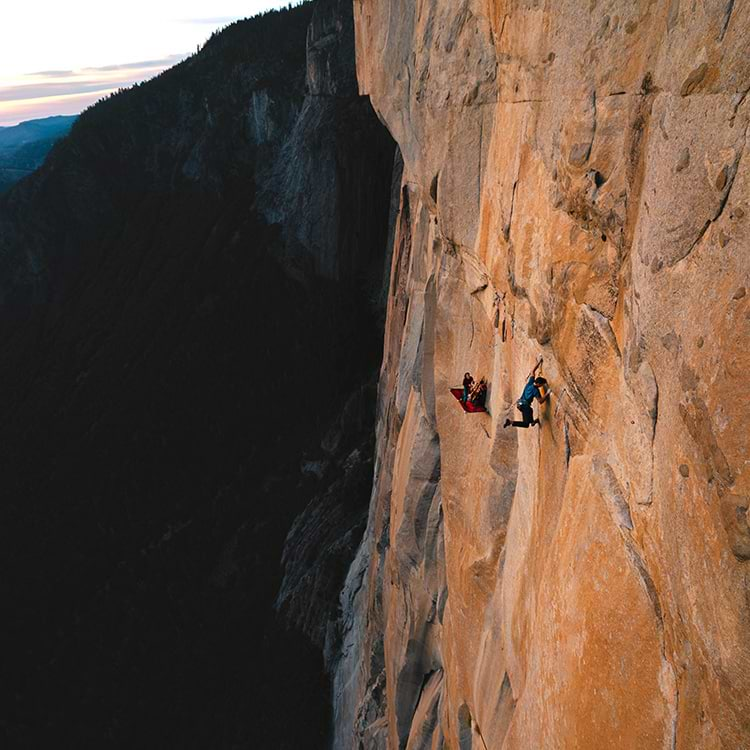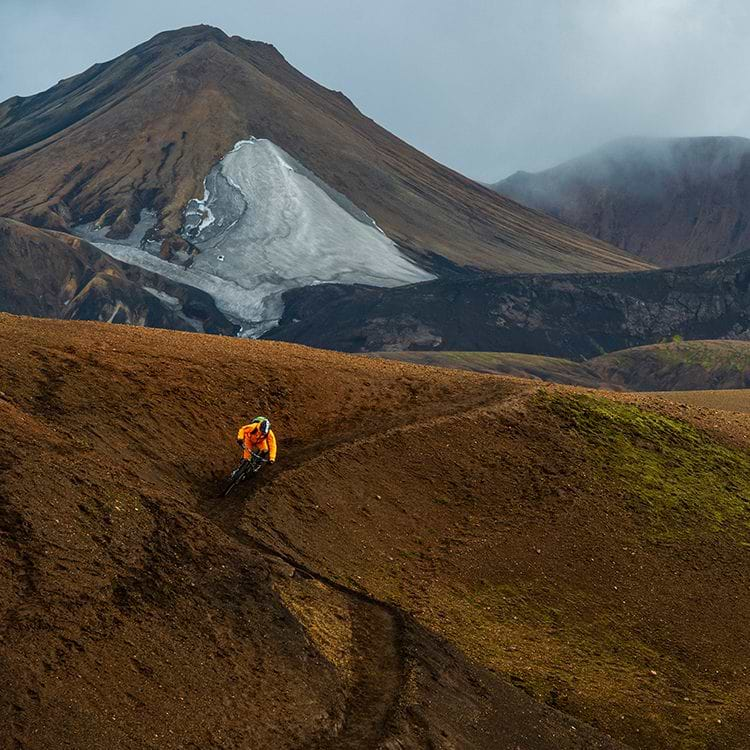Spring arrived overnight in the Arctic. A few days ago, it was still frigid in this far-flung Norwegian archipelago, with powder skiing right down to the ocean.
Now it’s 10 degrees Celsius, and we’ve gone from checking avalanche beacons and testing for wind slabs to looking out for wet slides and the leg-chattering melt-freeze effect.
Ski touring in Norway’s Lofoten Islands feels like travelling through an Arctic version of the Lord of the Rings. In abrupt beauty, the Atlantic Ocean meets the rugged granite shores, and wild and craggy mountains rise directly from the sea. You might even catch yourself looking for dragons.
The spectacular and otherworldly scenery is enough to offset our leg-burning ascent as Chad Sayers leads our pack upward. I follow, with David Kantermo, Anna Segal and filmer Elias Lundh moving close behind. It’s my third ski trip to Lofoten, but my friends are exploring the islands’ cinematic grandeur for the first time.
Off the northwestern coast of the Norwegian Sea, the Lofoten Islands are home to the oldest settlements above the Arctic Circle. Stone Age people came here 6000 years ago for hunting and fishing. Fishing is still vital, but during the last decade, the area’s popularity has gone viral, and tourism has become one of the most significant economic drivers. On the 68th parallel north, Lofoten’s ever-lasting summer light draws dedicated adventurers from around the globe, including those looking for a truly unique spring ski experience.
The Lofoten Range is only 160 kilometers long — formed by volcanic rocks older than northern Europe — pressed, heated, and formed over three billion years. Yet even if the mountains here are steep, they often start gently at a beach or a meadow not far from a road, so there is good access for uphill travelers.
Thirty minutes after starting up the mountain known as Store Kvittind, we rip skins on a small summit ridge. Peaks surround us, but it’s the water that leaves us speechless. The late light shines on Store Kvittind’s east face as a sparkling fjord stretches below, pointing its crooked finger toward the ocean.
It’s well after 8 p.m. when we point our skis toward the sea. The snow is so creamy that I feel like I’m cutting through soft butter as I lay down turns behind Chad and Anna. We exit a steep pitch into an open bowl, and giant snow crystals spray from their ski tails, making it hard to see. I work my way further right to get a clean line, and I notice the smell of the sea as it rises up the mountain to greet us. We are back at our vehicles 20 minutes later, and the sun has just dipped behind the mountains. We crack a beer and cheer on our epic experience in the last golden rays.
Mountain guide Seth Hobby grew up near Seattle in the Pacific Northwest, developing a climbing addiction he would ultimately pursue worldwide. After an expedition to Nepal, he met Maren, a charismatic Norwegian woman. After a few long-distance years, Seth followed his heart and moved to Norway in 2007. The couple eventually got married and moved to Kabelvåg, a small fishing village on the Lofotens with less than 2 000 inhabitants.
They predicted the demand for guided ski touring and, in 2021, founded Northern Alpine Guides. The company has been growing steadily ever since. During the three-month ski season, they employ 10 to 12 guides and offer ski-and-stay packages at Nyvågar Rorburhotel — The Lofoten Ski Lodge — a picturesque spot on the sea on the outskirts of Kabelvåg.
“We have about 2 000-2 500 ski touring guests annually, mostly foreigners,” says Seth while we enjoy a cold beer on the patio after skiing.
When I first came here more than ten years ago, I remember meeting the occasional foreign ski tourist, but they were few and far between. Lofoten was different back then — less accessible, and few tourists. Now, it’s evident that the reputation of Lofoten’s unique ski touring experience has spread far beyond its frozen shores. Of course, some locals are unhappy with the change because, like any popular tourist destination, it can be busy during the peak season, which here is during Easter.
This time, however, we weren’t bothered by too many people — there were plenty of mountains to choose between and so much terrain to explore, so we set our skin tracks and found our paradise.
The next day, the clouds hang low, and a light rain prompts us to look for something other than skiing. When Seth tells us about a decent swell at Unstad, Lofoten’s most notable surf spot, we fill up the coffee mugs and drive southwest.
Lofoten is world-famous for cold-water surfing, and the left break at Unstad is what the locals, some pro surfers, and visiting skiers and snowboarders rave about. The remote surf spot on Vestvågøy, with snow-capped peaks in the background, is one of the most photographed beaches in Europe.
Unstad was discovered in the mid-sixties when a few young Norwegians made their own surfboards — entirely based on a photo from The Beach Boys album “Surfin’ Safari.” Fast forward, and Unstad is now well-established as a destination surf spot. The scene in the tiny village is growing steadily, with two board shops and a busy coffee shop.
So, after putting on thick winter wet suits, hoodies, and gloves, we join the action and jump into the frigid water. Today, it’s quick and choppy, which is not ideal; however, the surroundings are thrilling, and we have nothing better to do. Mountains tower out of the sea all around us, and surfers catch waves. Watching the scene while bobbing in the middle of it is a pure pleasure. Chad and David, both keen surfers, get some good rides.
Post-surf, we enjoy the early evening glow by a warm fire and watch a few locals still ripping on the point break. A fishing boat goes by in the distance, mountains with a few remaining strips of snow surround us, and dark clouds create a moody feeling over the bay.
Lofoten has more surprises for us as winter makes a strong comeback in the next few days, and we get more powder skiing. Twenty centimetres and some wind do their thing, and we happily harvest the gift from above during a few big days of touring. We could not imagine a better way to end a season — and a truly unique ski trip in the Arctic.
Lofoten Life
Watch the movie →
















































